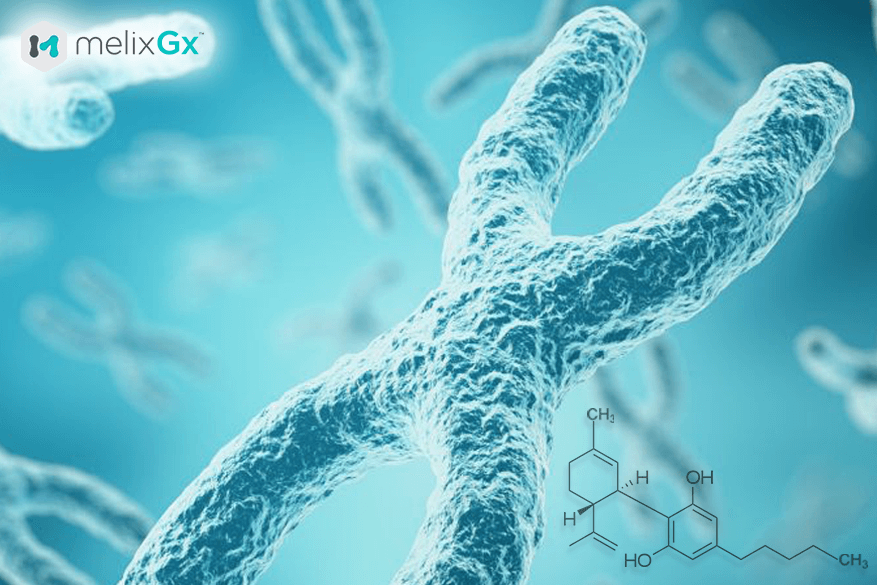How Your Genes Influence Your Reaction To Cannabis

Genes are the blueprints that determine how all living things grow and develop. About 20,000 genes make up the human genome, our complete collection of DNA. Between any two humans, there is about 99.7% genome similarity. But the last 0.3% makes all the difference in the world.
My genes control my reaction to cannabis?
Everyone knows that DNA is the blueprint of life, and that no one has the same DNA as you. But did you know that a few of your genes control the way your body and mind respond to the ingredients in cannabis?
Certain genes code for functional proteins called receptors and enzymes, which respond to and metabolize cannabinoid ingredients after ingestion.
People with different versions of these proteins will respond to cannabis in different ways, and to determine that we have a DNA test kit as an option.
What do genes actually do?
In as few words as possible, 1 gene codes for 1 protein.
Humans have about 20,000 genes, and all 20,000 genes are present in every single one of our 37,000,000,000,000 (thirty-seven trillion) cells.
But every gene isn’t expressed, or “turned on”, by every cell. The specific genes that a given cell expresses are what separates that kind of cell from other kinds of cells.
The only difference between a muscle cell and a cell in our retina, is the unique combination of genes expressed by that type of cell, and therefore the proteins the cell expresses.
All cells express hundreds of genes that are necessary for basic cell functions, but different kinds of cells also express genes unique to only that type of cell.
Our genes code for thousands of kinds of proteins with diverse functions, including some that mediate our reaction to cannabis.
What do my genes have to do with my reaction to cannabis?
Just like genes code for the proteins that allow our eyes to see and our muscles to contract, genes also code for proteins known as receptors and enzymes. Cannabinoid receptors and enzymes are the parts of our body that interact with cannabis, producing the effects we perceive.
The genes that code for these proteins are the genes that control our unique reaction to cannabis.
Genes that code for cannabinoid receptors
Receptors are cell-membrane proteins that bind to specific compounds outside the cell, thereby producing a reaction inside the cell.
CB1 receptors are located in our brain, and when they’re activated by THC or one of our endocannabinoids, they reduce the activity of the brain cell (neuron) in which they’re located. That’s why they’re known as inhibitory receptors: their activation inhibits the activity of the cell.
However, scientists have discovered at least nine different variations of the CNR1 gene which codes for CB1 cannabinoid receptors. This means nine different people could each have a distinct version of the CB1 receptor.
Likewise, there are four different versions of the CNR2 gene. Together, this means that humans have 36 different potential combinations of CB1 and CB2 cannabinoid receptors.
Differences in receptor protein structure and function can affect binding affinity as well as the strength of the signal produced by agonists of the receptor.
Genes that code for cannabinoid enzymes
Enzymes are proteins that break down large molecules into smaller, more useful molecules that our cells can easily handle. Everything from nutrients that we ingest to signaling molecules to cell byproducts are metabolized by enzymes.
Three enzymes in particular - CYP2C9, CYP2C19, and CYP3A4 - are responsible for breaking down cannabinoids like THC and CBD. These enzymes belong to the cytochrome P450 family of liver enzymes that metabolize the vast majority of foods and drugs we consume.
CYP450 enzymes are located in our liver, and they act on any blood that passively flows through the liver. However, this only accounts for about 10% of the activity of these enzymes.
The remaining 90% of CYP450 activity occurs during the first-pass metabolization. As its name suggests, first pass metabolization occurs on the “first pass” of stomach contents through the liver, before they ever enter our bloodstream.
Due to first pass metabolization, the effect of liver enzymes is about 10X greater on substances that are swallowed compared to any other route of administration (smoking, intravenous, etc.).
CYP2C9 is responsible for metabolizing THC
Specifically, CYP2C9 transforms Δ-9 THC (the active ingredient of cannabis) into 11-OH-THC, which is twice as potent as Δ-9 THC.
This is why edible cannabis products are more potent than vaporized cannabis products, and also why they take longer to produce an effect.
Furthermore, there are two different versions of the human CYP2C9 gene - CYP2C9*1 and CYP2C9*3.
One study recently found that people with the CYP2C9*3 variant have 3-fold greater blood levels of THC, compared to people with the CYP2C9*1 variant.
This increase in serum concentration corresponds with increased reported drowsiness and subjective effects of THC administration.
Differences in enzyme protein structure and function can affect the rate at which an enzyme degrades its substrate (in the case of CYP2C9, the substrate is THC).
CYP2C19 and CYP3A4 are responsible for metabolizing CBD.
Just like CYP2C9 metabolizes THC, both CYP2C19 and CYP3A4 break down CBD after ingestion. While there haven’t yet been variations discovered in the genes that code for CBD’s metabolic enzymes, more research may uncover new kinds of mutations that cause the differences between individual CBD metabolization. CBD is known to competitively inhibit CYP3A4, which alters the metabolism and blood levels of most other medications also metabolized by CYP3A4. Care should be taken to ensure that CBD usage won’t interfere with your current prescription medications.
As we continue to progress into the future, it is certain that more genes will be discovered which play critical roles in the functioning of our endocannabinoid system and our overall health.
Check back for updates and to learn more about how our unique genetic makeup manifests itself in our daily lives.

